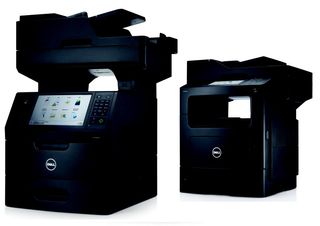
The paperless office never happened; today we need printed invoices, receipts, correspondence and contracts as much as we ever did. The big issue is that print costs haven't dropped, while the pressure to reduce costs is greater than ever. So what can a business do to keep costs under control or reduce them?
If you're finding print costs in your business are slowly rising then you're not alone, but you're certainly not powerless to do something about it. To start if any of the printers in the office are more than three-years old you should certainly consider replacing them. New models can offer direct cost-savings in terms of the cost per page, but alongside this are additional productivity saving features, which even basic models can offer.
To start it's important to understand how manufacturers measure the cost per print of a printer and how this is relates to the consumables used, paper stock and even the settings on the printer itself.
Calculating printer cost per page
CPP or cost per page is an industry standard term, but when quoted doesn't necessarily have to adhere to an actual standard. Any reputable manufacturer will quote the independent, internationally recognised ISO 19752 standard. This regulates how print coverage and cost measures are made, so you can be confident when comparing models and making purchase decisions.
At the most basic a cost per page is the price in consumables used per printed page. The ISO standard requires 5 per cent black coverage, this doesn't sound a lot but it represents a solid black band about 1.5cm thick across an A4 page. This equates to the real-life measure of a full printed page of text using 12pt text.
For colour the calculation is a touch more complex. Again there is a standard but it needs to relate to what type of colour printing you're expecting to undertake as part of your business.
The ISO standard says 20 per cent coverage using CMYK - Cyan, Magenta, Yellow and BlacK - or five per cent of each ink, even if the printer actually physically has more colours than this. An example page that would fit the standard would be a simple business document that was mainly text with the odd graph, with a low-colour usage.
Get daily insight, inspiration and deals in your inbox
Get the hottest deals available in your inbox plus news, reviews, opinion, analysis and more from the TechRadar team.
A noted exception to the cost-per-page measure is in regards to photo printing. Here paper stock starts to add to the cost per page, as plain laser paper that costs as little as 0.5p a sheet cannot be used for even reasonable results. Switching to specific inkjet papers will increase costs per print by at least 2p for plain inkjet paper, up to 50p per A4 sheet of glossy photo paper. This is on top of the roughly five-fold increase for 100 percent ink coverage on the standard colour cost-per-page pricing.
The more tanks the better the CPP
Choosing a printer that has a low CPP that adheres to ISO testing standard is a solid starting point, but keep in mind how you replace used inks. Separate ink cartridges minimise wastage, as you only replace a cartridge as and when it runs out, rather than replace a combined colour cartridge where the remaining ink would go to waste. This tends to be the case too, if your logo or presentations tend to favour one colour then that's the one that's going to run out first.
Another useful check is for printers that offer high-capacity or high-yield cartridges, usually as a replacement option. While these are initially more expensive to purchase, in the long run they pay off with a lower CPP of anything up to 50 per cent. It's the equivalent of buying ink in bulk.
Reducing paper costs
For paper costs a printer that delivers automatic duplex printing - printing on both sides of the paper - will help reduce paper usage. This can also help automate producing brochures, booklets and cards. Staff training and a well implemented IT policy will be needed to get the best out of a duplex printer and the features it can deliver.
The upshot of these points is that a seemingly cheaper printer model may very well turn out to be a lot more expensive in the long run. With the complete cost of replacement ink cartridges running as high as £60, the initial investment in a printer is easily overshadowed by its consumable costs in the long run. This means even a modest cost saving mounts up over thousands of prints.
Making printing part of your employee IT policy
Making a good purchase decision is one thing, using a new printer cost-effectively is another. Modern printers do a good job of intelligently selecting the most efficient ink settings based on the paper stock being used - it won't use more ink than the paper can handle - and based on the type of document being printed.
Directly reducing print costs is best done using staff training and a practised IT policy. Making employees aware of draft print modes for everyday internal documents not only reduces print costs - draft modes dramatically cuts the amount of ink used - but also outputs printed pages in a fraction of the time too.
The same applies to colour prints. Either restricting colour printing options to specific members of staff or applying draft as the default mode for systems through IT administrator policy, on top of staff training for when and how to use colour printing effectively will help minimise print costs.
Finally careful logging of printer use is another way of staying on top of printer costs. Besides shopping around for the best prices, many used cartridges can be recycled to offset costs of new refills. Discuss the options with your suppliers to make the most of your consumables.
